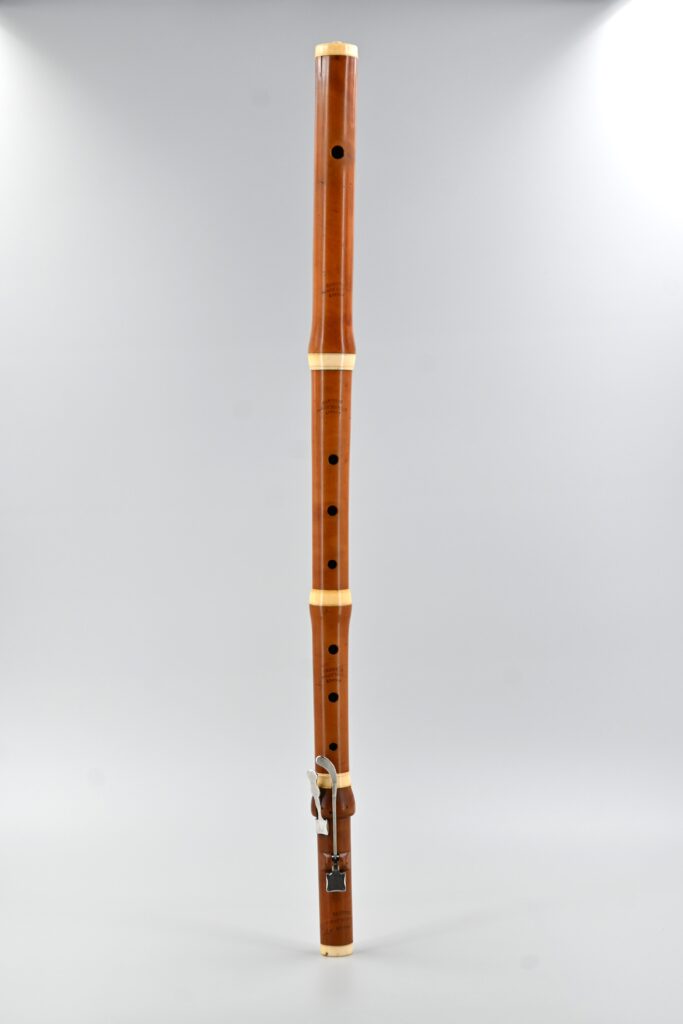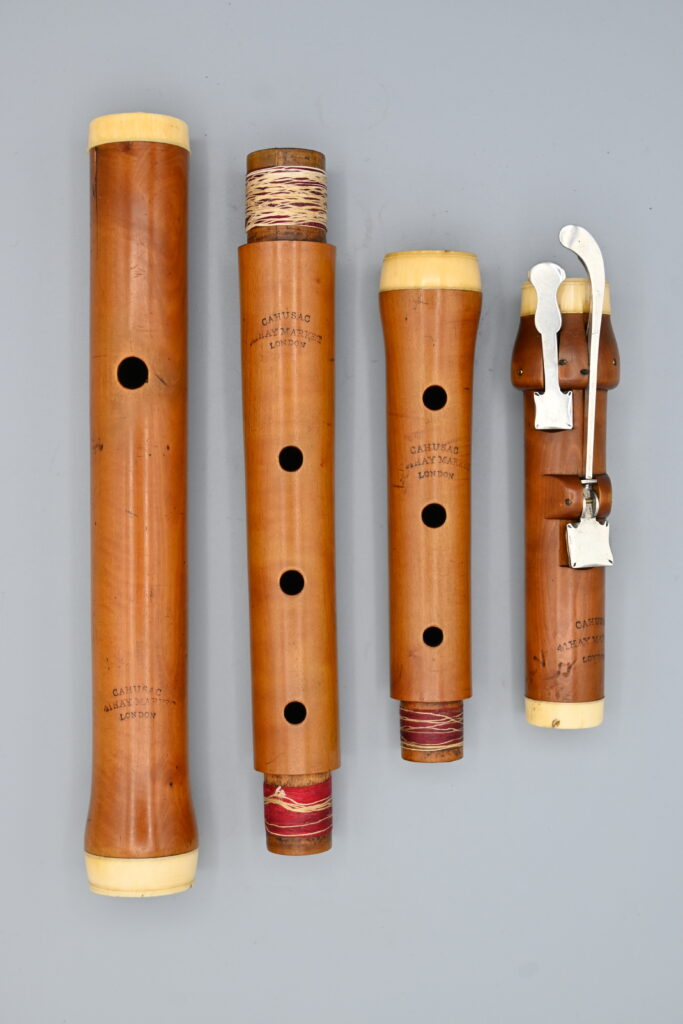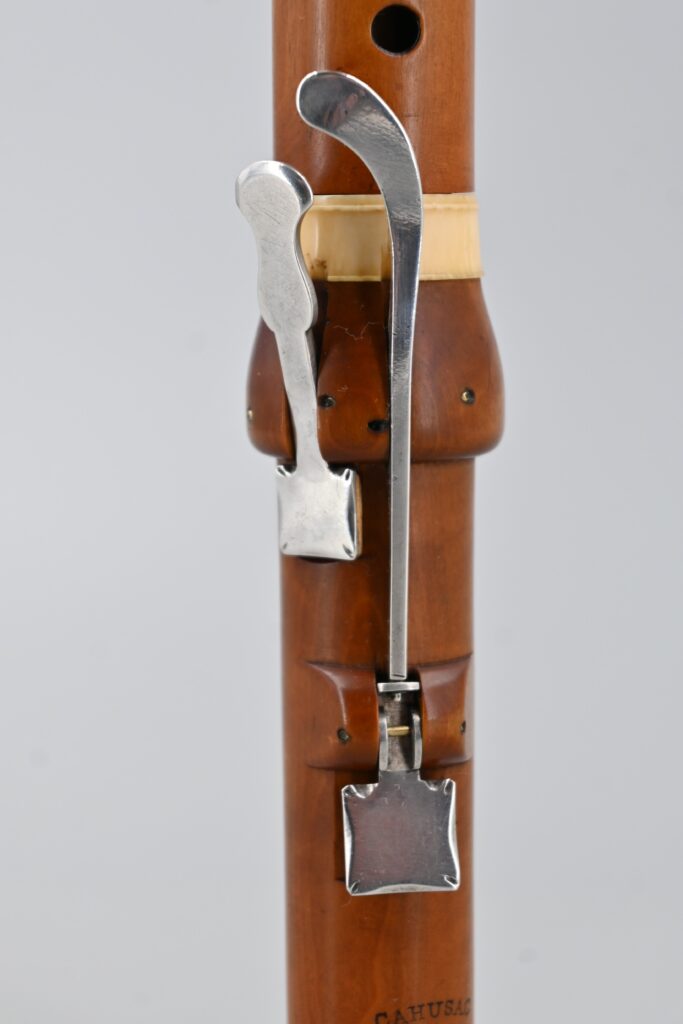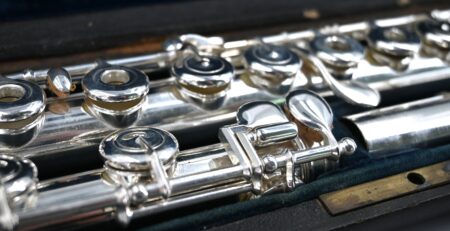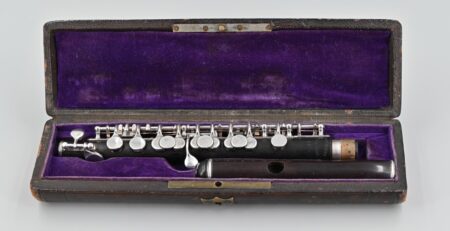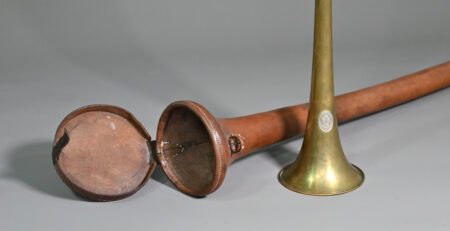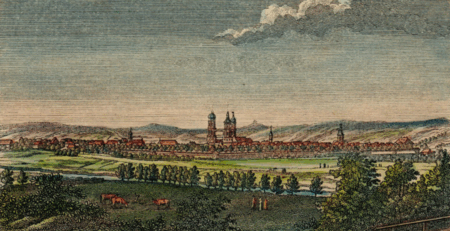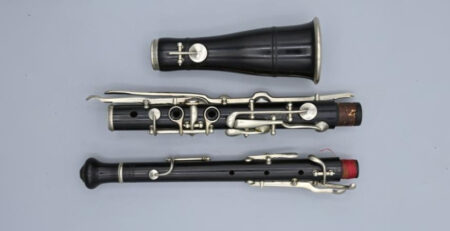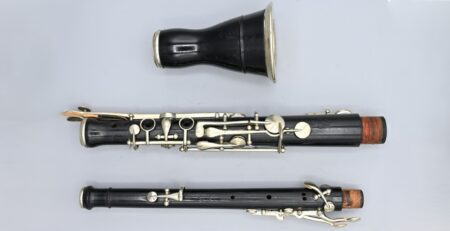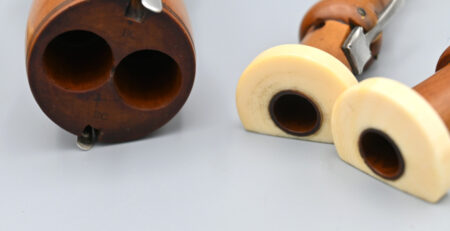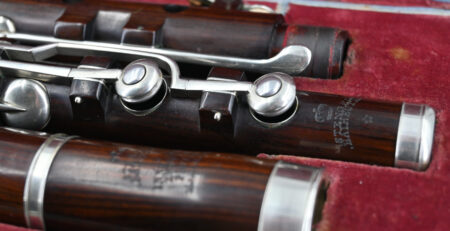Flute – CAHUSAC, Thomas (Junior)
This is a beautiful, boxwood flute made at the turn of the nineteenth-century by no other than Thomas CAHUSAC Junior or Thomas II (1756-?1843). The Cahusacs were among the first woodwind instrument makers in London and became extremely famous.
Thomas Cahusac II was at the 41 Haymarket address from 1800 to 1805. Therefore, we can date this instrument to that time! The New Grove Dictionary of Musical Instruments, published in 1984, p.298, mentions under Cahusac an ‘exceptional, two-key flute stamped 41 Haymarket’ (Thomas Cahasac: (ii), 1800-05). Could this be that same instrument?
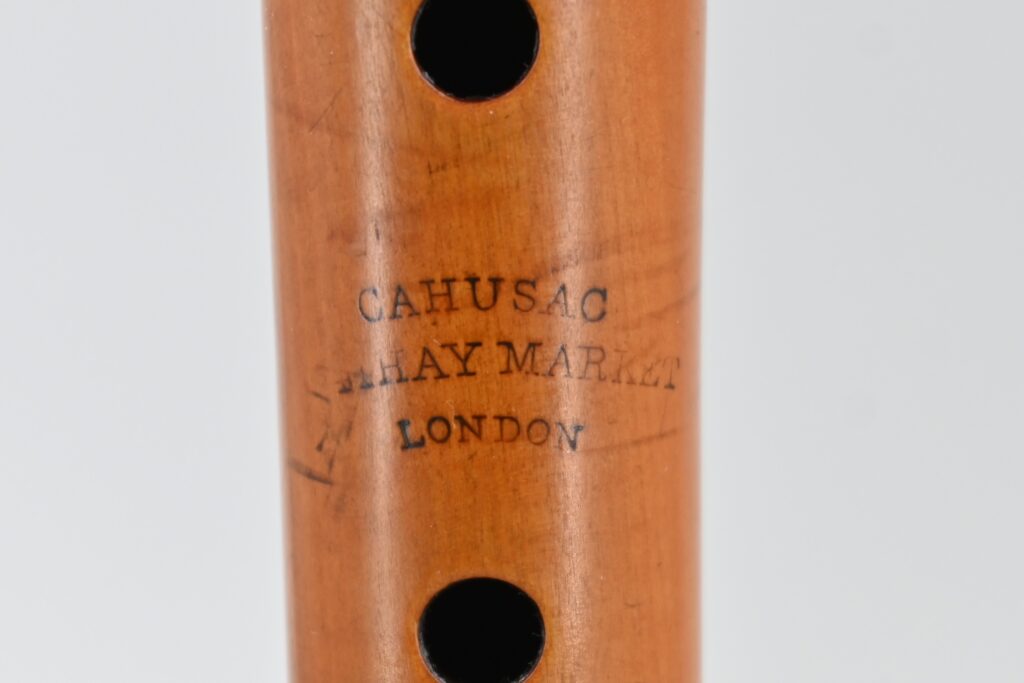
This flute was crafted with a high level of workmanship in boxwood which has gained a lovely honey colour over the past two hundred years. What immediately stands out is that the flute does not end with a normal D foot, which was common at that time. It has however an extension to low C sharp with an additional key. So, why do we need that low C-sharp? You can use it for a D2/C-sharp trill. There were also already at that time compositions for flute that used this low C-sharp. It also features a screw-cork in the head joint.
This Thomas Cahusac II flute plays nicely at a pitch of around a=432 Hz. It has a bright and colourful sound and at the same time is seemingly powerful even though the embouchure is so small. The lower notes have great depth. It’s very easy to play and the intonation is easy to manage.
This flute is perfect for playing all kinds of classical-period music.
